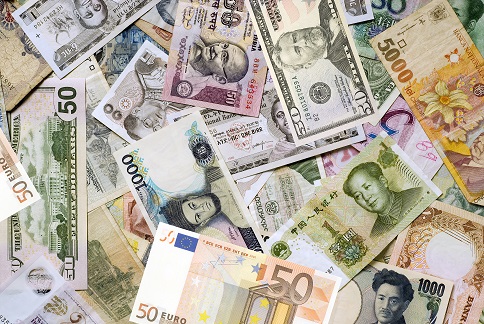
After a short correction, the US dollar gains back strength, soaring near to July’s two-decade high with broad effects on global financial markets. The US Dollar has been appreciating against other currencies since mid-2021, but the most rapid rate of the increase happened since the Russian invasion of Ukraine.
The dollar index, which measures the value of the US greenback against a basket of other foreign currencies, gained 14 percent so far this year. This was primarily due to the aggressive rate hike decision of the US Federal Reserve and global investors moving assets to the perceived safety of the US amid geopolitical tensions.
To battle against soaring inflation, the US Federal Reserve raised interest rates for the fourth time this year in July. This increased the federal funds rate to between 2.25 and 2.50 percent, which is the highest level since 2019.
The dollar has an important role in determining global commodity prices as it is the benchmark pricing mechanism for most commodities.
Commodity prices and the US dollar are inversely correlated. When the dollar appreciates, the price of commodities measured in other currencies rises. This causes an increase in raw materials that eventually tends to a decline in demand. Likewise, a depreciating dollar brings about a lower price for raw materials, leading to higher demand.
The US dollar is considered the reserve currency of the world. Countries across the globe hold the dollar as a reserve asset, believing it is the most stable foreign instrument.
In the initial days of the Russia-Ukraine war, commodity prices across the world surged to record or multi-year highs due to supply and inflation worries.
In March, spot gold surged to near record highs. It was primarily due to increased safe-haven demand amid worsening global geopolitical tensions. But prices reversed most of such gains due to a strong dollar. Gold shed more than 15 percent from this year’s peak as investors shift focus to higher interest-bearing assets.
Corrective selloffs were witnessed in commodities like silver, crude oil, copper, aluminium, and other base metals as well. Supply-demand dynamics coupled with a strong dollar attributed to selling pressure on these commodities.
The extremely strong dollar devalues other global currencies as well. The Euro shed a twenty-year low posting a 13 percent decline so far this year. Recession fears due to uncertainty about energy supplies from Russia added more pressure on the eurozone currency. In addition, concerns over economic growth due to fears of recession depreciated the British pound to a two-year low.
In Asia, China’s yuan weakened to a two-year low on domestic economic woes and aggressive rate hikes by the US Federal Reserve. In mid-August, Peoples Bank of China surprisingly cut its interest rates to shore up a sagging economy.
Meanwhile, Japan’s yen now staging a comeback from a 24-year low hit in July. It was the weakest currency earlier this year second to Russia’s Ruble.
On the domestic side, Indian Rupee weakened to an all-time low testing 80 a dollar in July. The currency so far now depreciated about 6.5 percent since January this year. A falling rupee increases the landed cost of imported commodities and puts upward pressure on inflation.
First published in Economic Times








